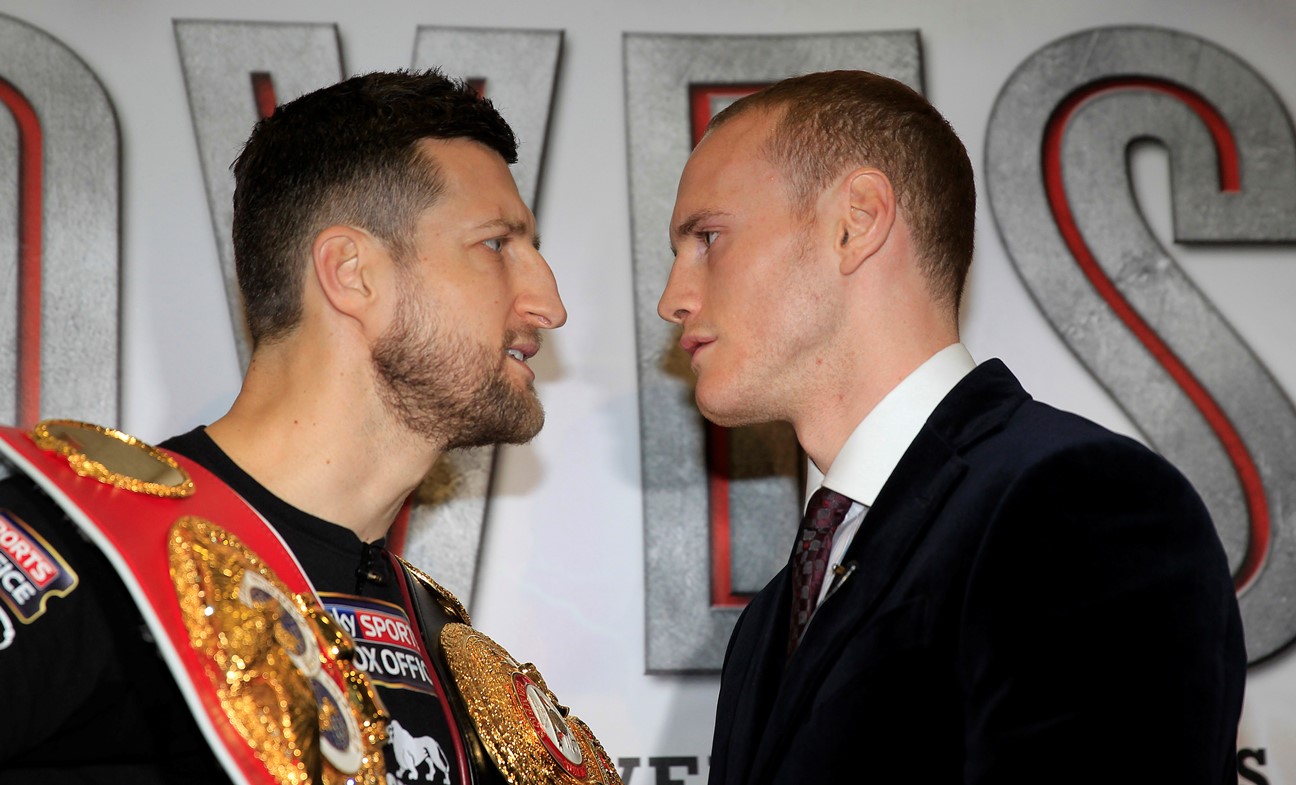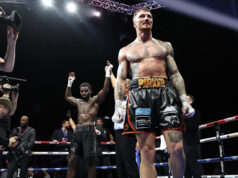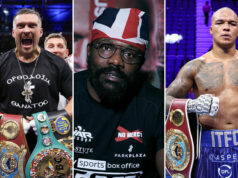While most everyone who isn’t Carl Froch agrees that his first fight against George Groves was ended prematurely by the referee, and most everyone concurs with the scorecards up to that premature stoppage, after that point there is no consensus about what was going on in the ring that night. Some think Groves was on his way to a strong, aggressive out-boxing of Froch, while others believe Froch had worn Groves down and was on his way to a clean KO or TKO.
A major factor for Groves in doing as well as he did was clearly the hard knockdown he scored on Froch. As anyone who has seen a crushing, early round knockout knows, getting one’s bell soundly run in the first round or two is entirely different from having the same thing happen in Round 5 or 6. A fighter is usually colder at that point, and shaking the effects off are harder. In Froch’s case, the lingering after effect was masked by how tough Froch proved in getting up and going on, but Groves knows full well that the Cobra never fully recovered, as he commented later on how fuzzy Froch seemed.
Since Groves would be a fool to bank on catching Froch like that again, he must expect Froch to perform better in the rematch. Furthermore, Froch’s experience suggests he is better placed to improve in a second outing, and those who believe Groves was faltering in the late rounds have a point. Ergo, “St. George” needs to make some adjustments if he is going to slay the Cobra.
[Also See: Froch’s 4 Keys to Victory in The Rematch]
1. Don’t Get Cocky: In Groves’s mind, he cracked boxing’s Ironman and was working his way to a clean points win and the defining victory of his career. He has good reason for confidence, but must avoid reading too much into it. A big part of why Froch winged and looped his punches last time around was that he was concussed and stayed that way. If Groves thinks he can tattoo Froch so freely again and get away with it, he will learn otherwise and much to his own sorrow.
2. Control The Distance: Carl Froch has always been a relatively easy guy to hit. The problem has been to avoid getting tagged by him in turn. Groves managed this fairly well last time by using his range and speed to land leather while remaining outside Froch’s comfort zone. This is his winning formula, and he needs to stick to it in a return match. Going into a phone booth would play into Froch’s hands, since the Cobra needs to get closer to strike, and might even want to grab onto Groves’ belt, hang on, and rough him up all night. Controlling the range is critical for Groves.
3. Sound Ring Generalship: Even with Froch’s bell indefinitely rung, Groves did as well as he did only by working harder than he had ever worked in his career. This is a story I’ve seen many times, being so axiomatic that it’s what the late-fight comeback strategy is based on. If Groves fights smart, he can count on winning most of the rounds of the fight, so he shouldn’t try to win all of them. He must pace himself better, and if that means going defensive, catching his breath, and giving Froch a round, so be it. Choosing when to let Froch surge into empty space and when to rest is essential if Groves is to have some gas left for the last quarter.
4. Get Ready For Things to Get Ugly: Anyone who tries to use speed against Carl Froch needs to be prepared for a mauling. If Groves loses his cool in the face of the rough tactics and tries to return in kind, he won’t do well. Froch has gone rough with some of the most rough and tumble guys around and prevailed. Yet Groves is an English middleweight, so he needs to resist the temptation to maul back. For Groves, the sound tactic is to get out of the clinches as fast and safe as possible, preferably with the referee standing between him and Froch.
Groves is the fighter who needs to make the most adjustments to win the rematch, but if he can do these four things, he stands a good shot at a points victory.











